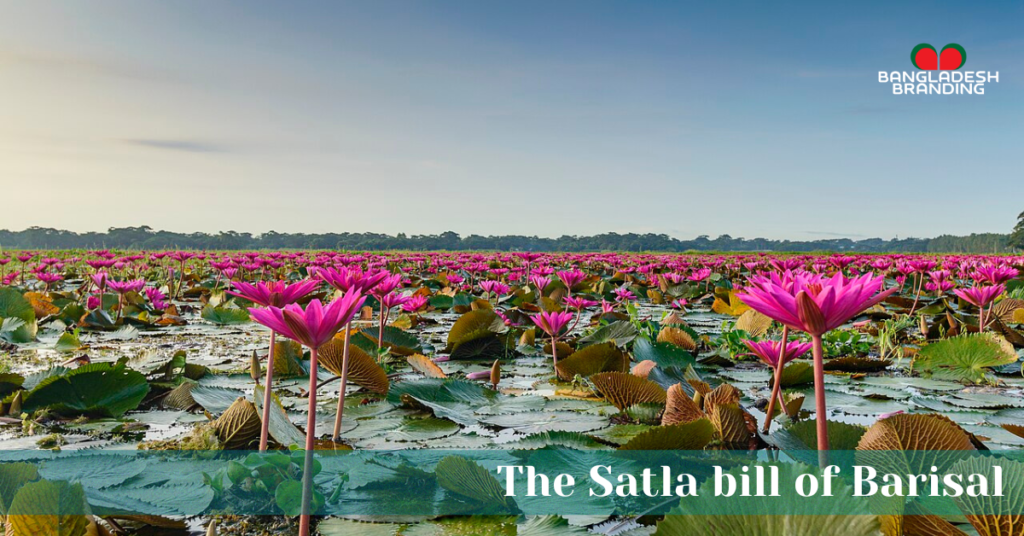For a brief period, one might imagine a sheet of red lilies. Lily covered the entire bil. For this reason, the village is now known as “Shapla Bil.” This village is known to all as North Satla. Naturally, everyone in Kalbila village, Satla union, Uzirpur upazila, Barishal, will be fascinated by this lily’s unhindered hue. The respect for this variation of Rupshi Bangla has now surpassed the boundaries of the villages.
When will you go to Satla?
Typically, September and October are when red water lilies bloom. Additionally, visitors from all over the nation have already begun to travel to the district to witness the red water lilies growing in that bil’s water. The people who live there think it might soon rank among the nation’s tourist attractions. It is challenging to discern the red hue in the green from a distance. The presence of flowers becomes more evident as one gets closer. A bill full of vines and weeds with millions of crimson water lilies blooming. It is a very beautiful country.

The eye is drawn to the red lilies of the bill’s inherent beauty. See the water lilies of this interesting bill every day, drawing tourists from all around the country who are eager for nature. The bill’s shapla serves as the basis for the commercial graphic. Satla’s “Shapla Bil” is thus growing in popularity every day.
There are plenty of red water lilies even though purple, white, and red water lilies thrive in this buried region for the majority of the year. The color of the bil gets redder the deeper you go. It appears that you are imprisoned in the kingdom of lilies at one point.
Not only is the lily bil beautiful, but many households in those places earn a living by harvesting water lilies from the bil and selling them at the neighborhood market. This bil’s lily is vital to many of the locals. Fishing from the bil, harvesting water lilies, and selling their catch at the market provide a livelihood for hundreds of households in the region. Here, all the water lilies perish in the early December winter water recession. This was the site of paddy cultivation during the time. On the other hand, it is unlikely that rice and lilies coexist anywhere else.
Location
It is situated roughly 60 kilometers away from Barisal City. In the Sattar union of this upazila, it encompasses a large portion of Uttar Satla, Hartar Kalbila, Bagdha, and Khajuria villages. But nobody in the area is aware of the bill’s entire amount. But the Upazila Agriculture Department claims that the law encompasses roughly 1600 hectares of land.


Photo collected
How to travel to Satla
You can take a bus from Barisal to Shikarpur, then hire an automobile to get to North Satla. Additionally, if you are traveling from Dhaka to Barisal by bus, you can disembark from the Nritanhat bus at Uzirpur and hire an auto right there to view the Satla water lily bill. Alternatively, you can go to your destination in two hours by direct bus from the Nadhullabad bus terminal in Barisal to the villages of Satla and Bagdha. You can take a Mahendra car from Barisal to Satla and explore the Water Lily settlement.
Where to stay?
Satla doesn’t have any decent lodging options. You must return to Barisal city proper if you wish to stay somewhere better.On the other hand, you can stay at Satla School or at a local family’s home if you wish to spend the night in Satla Village by yourself. The villagers of Satla are friendly. Cheers to your gracious hosting. In Barisal, there are numerous high-quality residential hotels where you may simply stay the night. noteworthy Additionally, a number of inexpensive motels may be found along Port Road and Sadar Road.

